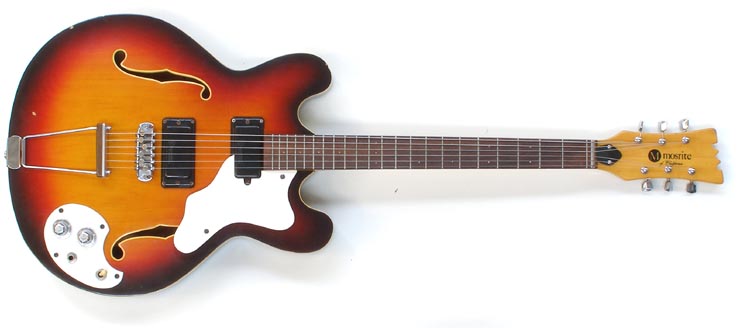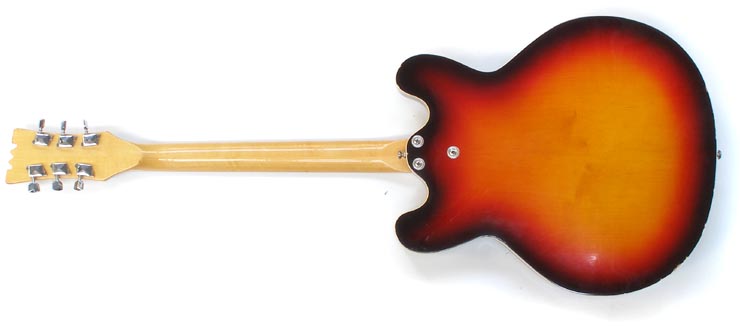

| You have to give it to Semie Mosely. His Mosrite guitars are about the most individual on the planet! This is a hollowbody Mosrite Celebrity from about April in 1968 (pot codes of 1346815, and serial number is K-2049). This was the heyday of the original Mosrite company, which spectacularly faltered soon after (after their distribution deal with The Ventures ended and an ill-fated agreement was struck with the Thomas Organ Company) - Mosrite filled for bankruptcy on Valentine's Day 1969. Mosrite were most well known for their Ventures solid-body guitars, but this Celebrity III is a fantastic guitar. It's not unlike a Gibson 330 both in appearance and playability, with its thinline fully hollow body and trapese tailpiece (no solid centre block like a Gibson ES-335). A previous owner had modified the original bridge by filing the bottom of the individual saddles, probably in an ill-considered attempt to stop the rattling and buzzing they were prone to (easy to avoid or rectify with some basic mechanical aptitude!). This unit (pictured fitted to the guitar in these photographs) will be in the pocket of the new Gator case the guitar comes with, while a new Japanese reproduction bridge has been fitted to the guitar. This vintage Mosrite is in amazing condition, with only a few minor chips and wear to the edges of the body. Check the detailed pics in the 'more pictures' link below. The neck is unmarked, as is the rosewood fretboard and the "speed frets" are perfect. These frets are explained in a quote on an interesting website with Mosrite historic information (click here to view), where Gene Moles, a Bakersfield session guitarist and assembly-line inspector for Mosrite guitars is quoted as saying, “It was a well-designed instrument. It felt good to a guitar player when he grabbed it. It had a narrow neck and a low profile, so you didn’t have to push down as hard on the strings to play it. And it had what we called ‘speed frets,’ where you could slide up and down the neck without getting held up on speed bumps (high-profile frets).” Sold to Gary |